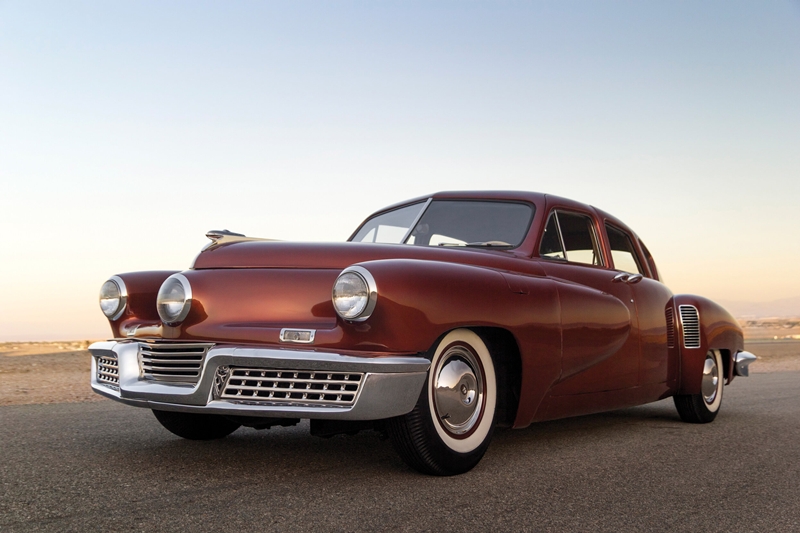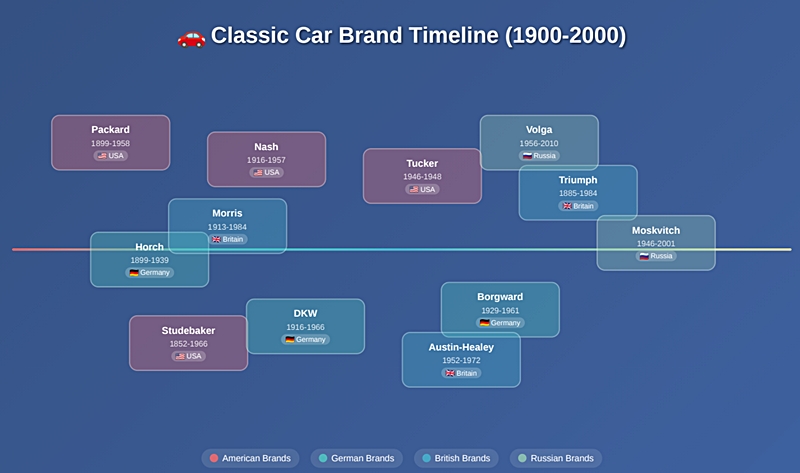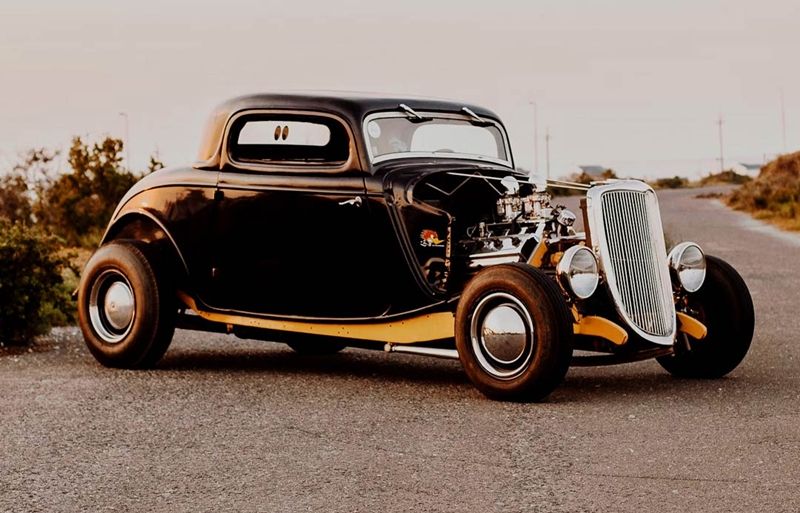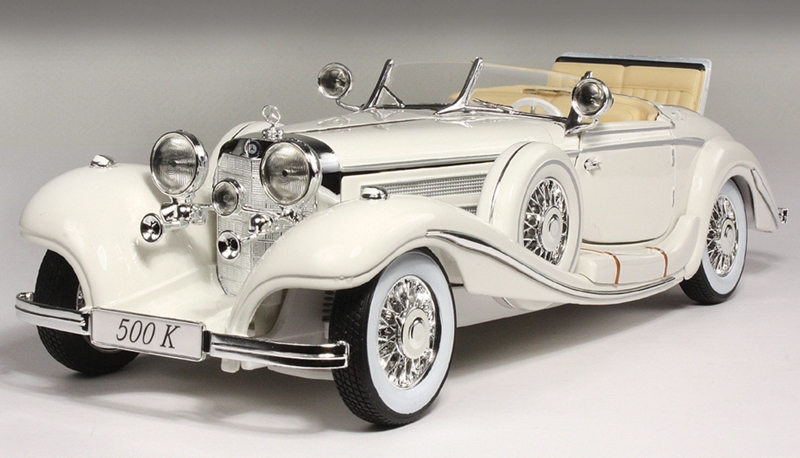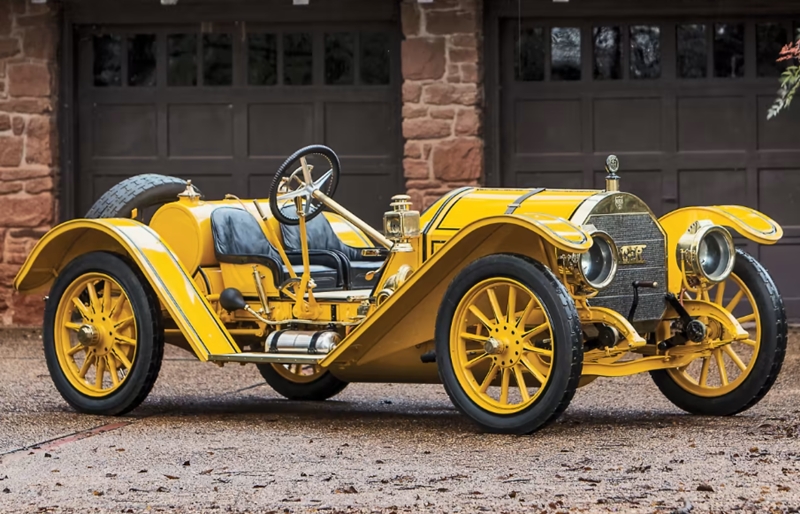Think about this: You’re walking through a classic car show, and suddenly you spot a badge you’ve never seen before. Maybe it’s a Borgward, or perhaps a Studebaker. You scratch your head and wonder, “What happened to all these old car brands?” Well, buckle up because we’re about to take a wild ride through automotive history that’ll make you appreciate just how many incredible manufacturers have come and gone over the decades.
The story of old car brands isn’t just about metal and engines – it’s about dreams, innovation, and sometimes spectacular failures. From the horse-and-buggy days to the modern era, countless companies have tried their hand at building the perfect automobile, and while many didn’t survive, their legacy lives on in the hearts of enthusiasts and the pages of history books.
Table of Contents
Also read: Brass Era Cars: 7 Stunning Models That Revolutionized Automotive History
The Golden Age of Automotive Innovation
Back in the early 1900s, starting a car company was like opening a lemonade stand – everyone thought they could do it! This explosion of creativity gave birth to some of the most innovative old car brands we’ve ever seen. Companies like Tucker, with its revolutionary safety features, or Cord, with its groundbreaking front-wheel-drive system, pushed boundaries that mainstream manufacturers wouldn’t dare cross.
What’s fascinating is how these old car brands often introduced features we take for granted today. Independent suspension, aerodynamic design, and even air conditioning – many of these innovations came from smaller, now-forgotten manufacturers who were willing to take risks that the big guys weren’t.
The competition was fierce, and for every success story, there were dozens of companies that folded after just a few years. But here’s the thing – failure in the automotive world often meant that the best ideas got absorbed by surviving companies, making the entire industry stronger.

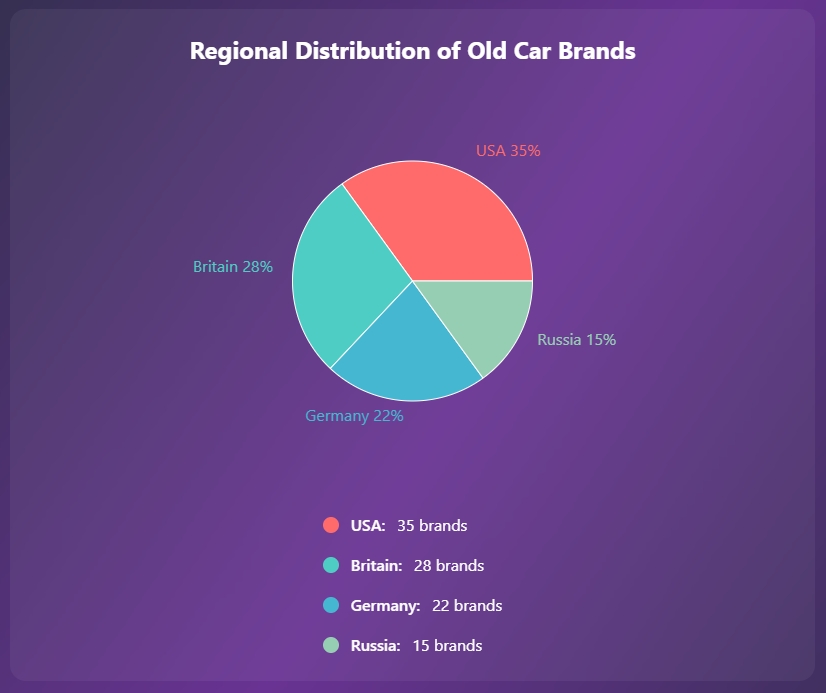
European Elegance: The Continental Old Car Brands
Old German Car Brands List:
- Borgward (1929-1961): Known for innovative engineering
- DKW (1916-1966): Pioneer in front-wheel drive
- Horch (1899-1939): Luxury vehicles before merging into Auto Union
- Wanderer (1896-1941): Part of the Auto Union group
- Maybach (1909-2012, revived 2002): Ultra-luxury manufacturer
- Goliath (1928-1961): Small car specialist
- Lloyd (1908-1963): Economy car manufacturer

European old car brands had a particular flair for combining engineering excellence with artistic design. Take Borgward, for instance – this German manufacturer was way ahead of its time with pneumatic suspension and diesel engines, but poor financial decisions led to its downfall in 1961.
The story of these old car brands often mirrors the political and economic upheavals of their times. Many German manufacturers were restructured or disappeared entirely after World War II, while others like DKW became part of larger conglomerates that eventually evolved into brands we know today.
British Motoring Heritage: When Britannia Ruled the Roads
Old British Car Brands List:
- Austin-Healey (1952-1972): Sports car icon
- Morris (1913-1984): Popular family cars
- Riley (1898-1969): Performance-oriented vehicles
- Wolseley (1901-1975): Upmarket sedan specialist
- Triumph (1885-1984): Sports cars and motorcycles
- Hillman (1907-1976): Compact car manufacturer
- Humber (1898-1976): Luxury car maker
- Sunbeam (1901-1976): Racing heritage brand

British old car brands have always had character – lots of it! These weren’t just transportation; they were statements. Austin-Healey captured the spirit of open-road adventure, while Morris made reliable family transport accessible to the masses.
The decline of many British old car brands in the 1970s wasn’t just about poor quality (though Lucas electrics certainly didn’t help their reputation). It was a perfect storm of labor disputes, economic challenges, and fierce competition from Japanese manufacturers who were building more reliable cars at lower prices.
What’s remarkable is how passionate the communities around these old car brands remain. Visit any British car show today, and you’ll find owners who’ve spent decades restoring these temperamental beauties, complete with stories about roadside repairs and the quirks that make each model unique.
American Dreams on Four Wheels
Old American Car Brands List:
- Studebaker (1852-1966): From wagons to avant-garde cars
- Packard (1899-1958): “Ask the man who owns one”
- Nash (1916-1957): Merged to form American Motors
- Hudson (1909-1957): Known for the “step-down” design
- Tucker (1946-1948): The car too advanced for its time
- Kaiser (1945-1955): Post-war upstart
- Frazer (1946-1951): Kaiser’s upscale sibling
- DeSoto (1928-1961): Chrysler’s mid-range brand
- Edsel (1958-1960): Ford’s famous flop
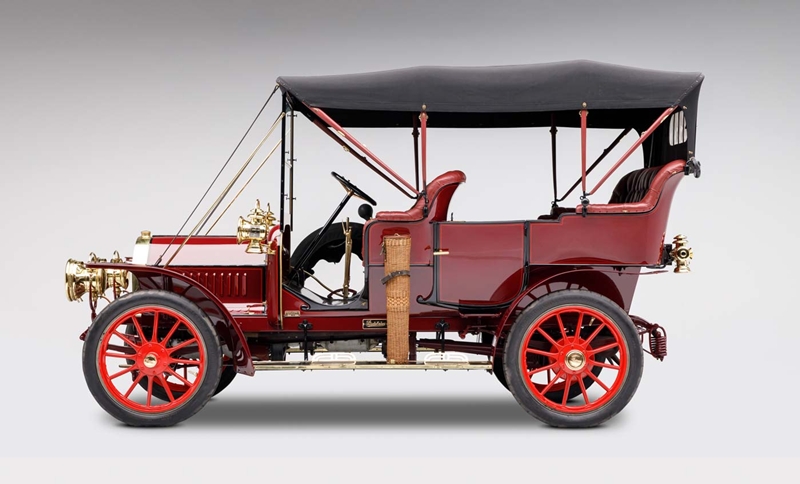
American old car brands represent the ultimate automotive dream – bigger, faster, and more powerful than anything else on the road. Packard’s slogan “Ask the man who owns one” wasn’t just marketing; it was a testament to the pride these cars instilled in their owners.
The story of Tucker is particularly fascinating among old car brands. Preston Tucker’s vision included safety features that wouldn’t become standard for decades: seat belts, padded dashboards, and a safety windshield. Only 51 Tucker ’48s were ever built, making them among the most sought-after collector cars today.
Studebaker’s journey from building covered wagons to producing some of the most forward-thinking cars of the 1950s shows how old car brands had to constantly reinvent themselves to survive. Their collaboration with industrial designer Raymond Loewy produced cars that looked like they came from the future.
Eastern European Automotive Adventures
Old Russian Car Brands List:
- ZIM (1957-1967): Soviet luxury limousines
- Moskvitch (1946-2001): People’s car of the USSR
- Volga (1956-2010): Mid-range Soviet sedan
- Chaika (1959-1988): High-end government vehicles
- AZLK (1930-2010): Moscow’s automotive plant
- IZh (1966-2008): Compact car manufacturer
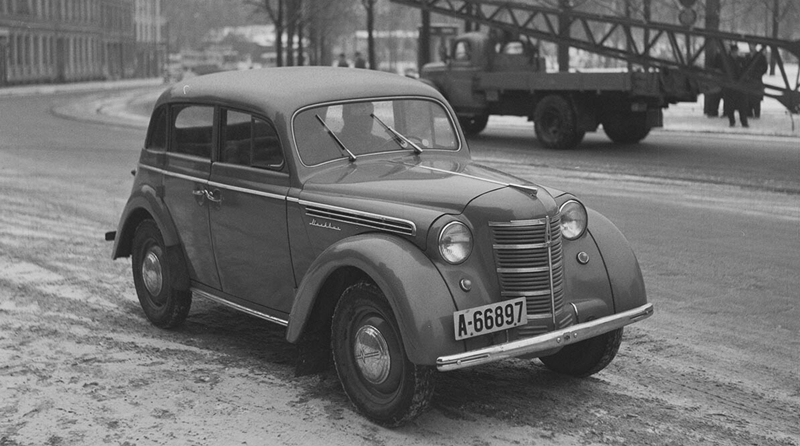
Russian and Eastern European old car brands operated in a completely different economic system, where market forces didn’t determine success or failure. These manufacturers focused on durability and simplicity rather than style or performance, creating cars that could handle harsh climates and rough roads.
The Moskvitch, for example, was designed to be repaired by anyone with basic tools – a necessity in a country where service stations were scarce. These old car brands may not have had the glamour of their Western counterparts, but they served their purpose admirably in challenging conditions.
The Rise and Fall: Why Old Car Brands Disappeared
Understanding why old car brands vanished requires looking beyond just business decisions. The automotive industry has always been cyclical, with economic downturns claiming numerous casualties. The Great Depression wiped out dozens of manufacturers, while the oil crises of the 1970s finished off many others.
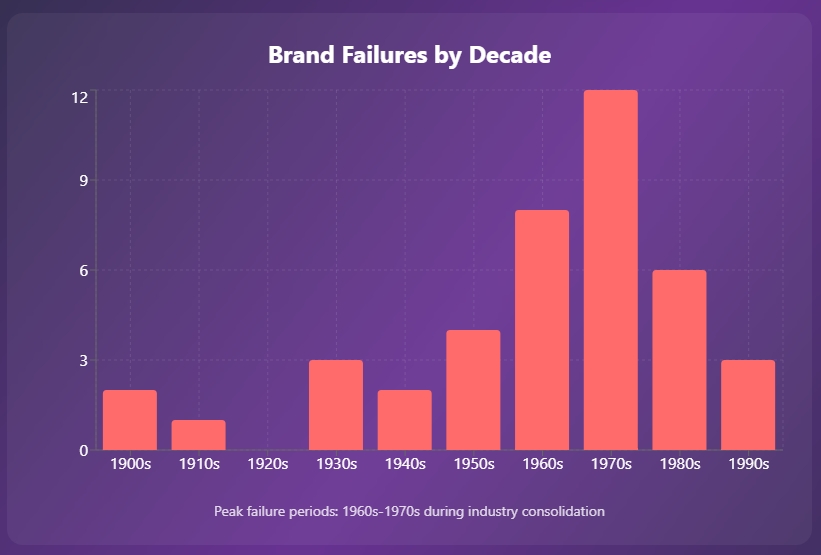
Consolidation also played a huge role. As the industry matured, it became clear that only companies with massive resources could compete globally. Many old car brands were absorbed into larger corporations, where their unique identities gradually disappeared in favor of corporate efficiency.
Technology changes created another challenge. The shift from mechanical to electronic systems required enormous investments that smaller old car brands simply couldn’t afford. Companies that had thrived for decades suddenly found themselves unable to keep up with rapidly evolving consumer expectations.
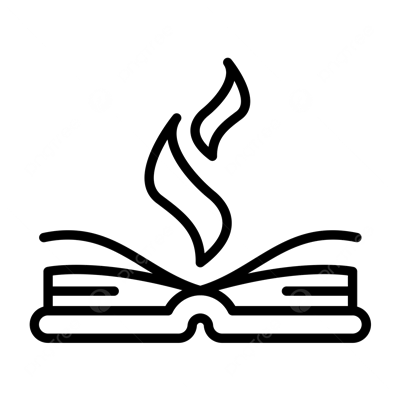
Myths About Old Car Brands Debunked
Myth #1: “Old car brands made better quality cars than modern manufacturers”
Fact: While old car brands certainly had character, the idea that they were more reliable is largely nostalgia talking. Modern cars last much longer and require far less maintenance than their vintage counterparts. We remember the survivors, not the thousands that broke down and were scrapped.
Myth #2: “Old car brands failed because they lacked innovation”
Fact: This couldn’t be further from the truth! Many old car brands were incredibly innovative – sometimes too innovative for their own good. Tucker’s safety features were decades ahead of their time, and Cord’s front-wheel-drive system was revolutionary. Often, these companies failed despite their innovation, not because of a lack thereof.
Myth #3: “All old car brands were killed by foreign competition”
Fact: While foreign competition certainly played a role in some cases, many old car brands disappeared due to internal factors: poor management, financial mismanagement, or simply being ahead of or behind their times. The American auto industry’s consolidation in the 1950s eliminated several brands that were actually quite successful.
Myth #4: “Old car brands were all small, boutique manufacturers”
Fact: Some old car brands were actually quite large in their heyday. Studebaker was once America’s largest wagon manufacturer, and brands like Morris in Britain or Moskvitch in Russia produced hundreds of thousands of vehicles annually.

The Collector’s Paradise: Why Old Car Brands Matter Today
Today’s collector car market proves that old car brands still captivate enthusiasts worldwide. A pristine Tucker can sell for millions, while even modest examples from defunct manufacturers command premium prices. This isn’t just about rarity – it’s about the stories these cars tell and the craftsmanship they represent.
Social media has created global communities around specific old car brands, where owners share restoration tips, parts sources, and tales of their automotive adventures. These communities keep the spirit of these brands alive long after the factories closed their doors.
The influence of old car brands extends beyond collecting. Modern designers regularly draw inspiration from classic designs, and several old car brands have been revived or reimagined for contemporary markets. The circular nature of automotive design means yesterday’s innovations often become tomorrow’s trends.

Frequently Asked Questions About Old Car Brands
Q: What was the most successful old car brand that no longer exists? A: Studebaker is often considered the most successful, operating for over a century and producing millions of vehicles. They successfully transitioned from horse-drawn wagons to automobiles and remained competitive until the 1960s.
Q: Are any old car brands making a comeback? A: Several old car brands have been revived or are attempting comebacks. Borgward returned in 2015 with electric vehicles, and there are ongoing efforts to revive other classic nameplates, though success varies widely.
Q: Which old car brand produced the most innovative vehicles? A: Tucker is often cited for safety innovations, but many old car brands contributed significant advances. Cord pioneered front-wheel drive, Nash introduced unit-body construction, and Hudson developed the revolutionary “step-down” chassis design.
Q: Why do old car brands have such passionate followings? A: Old car brands represent a time when cars had distinct personalities and weren’t designed by committee. Each brand had unique characteristics, quirks, and stories that create emotional connections lasting decades after production ended.
Q: What’s the rarest car from old car brands? A: The Tucker ’48 is among the rarest, with only 51 produced. However, many prototype vehicles from various old car brands exist in single digits, making them extraordinarily rare and valuable.
Q: Did old car brands influence modern automotive design? A: Absolutely! Many design elements, safety features, and engineering solutions pioneered by old car brands are standard today. Their willingness to experiment laid groundwork for modern automotive development.
Old Car Brands Complete Reference Guide
Comprehensive Database of Defunct Automotive Manufacturers
American Car Brands
Studebaker (1852-1966)
- Founded: South Bend, Indiana
- Peak Production: 1950s with over 200,000 units annually
- Notable Models: Avanti, Hawk, Champion, Commander
- Innovation: First to offer disc brakes as standard
- Collector Value: $15,000-$150,000+ depending on model
- Legacy: Transitioned from wagons to becoming America’s oldest automaker
Packard (1899-1958)
- Founded: Detroit, Michigan
- Slogan: “Ask the man who owns one”
- Peak Production: 1937 with 122,593 units
- Notable Models: Twelve, Caribbean, Clipper
- Innovation: Air conditioning, power steering pioneers
- Collector Value: $25,000-$500,000+
- Legacy: Symbol of American luxury and craftsmanship
Tucker (1946-1948)
- Founded: Chicago, Illinois
- Total Production: 51 vehicles
- Notable Models: Tucker ’48 “Torpedo”
- Innovation: Safety features decades ahead of time
- Collector Value: $1,000,000-$3,000,000+
- Legacy: Revolutionary safety design and tragic business story
Nash (1916-1957)
- Founded: Kenosha, Wisconsin
- Merged: With Hudson to form American Motors Corporation
- Notable Models: Metropolitan, Rambler, Ambassador
- Innovation: Unit-body construction, weather-eye heating
- Collector Value: $8,000-$75,000
- Legacy: Pioneered compact car concepts in America
Hudson (1909-1957)
- Founded: Detroit, Michigan
- Notable Models: Hornet, Commodore, Super Six
- Innovation: “Step-down” chassis design
- Racing Success: NASCAR dominance in early 1950s
- Collector Value: $15,000-$200,000+
- Legacy: Advanced engineering and aerodynamic design
Kaiser (1945-1955)
- Founded: Willow Run, Michigan
- Notable Models: Henry J, Manhattan, Dragon
- Innovation: Safety features, fiberglass bodies
- Peak Production: 1948 with 181,316 units
- Collector Value: $10,000-$60,000
- Legacy: Post-war innovation and entrepreneurial spirit
DeSoto (1928-1961)
- Parent Company: Chrysler Corporation
- Notable Models: Adventurer, Firedome, Airflow
- Innovation: Chrysler Hemi V8 engines
- Peak Production: 1957 with 117,514 units
- Collector Value: $20,000-$150,000+
- Legacy: Bridge between Dodge and Chrysler brands
Edsel (1958-1960)
- Parent Company: Ford Motor Company
- Total Production: 118,287 vehicles
- Notable Models: Citation, Corsair, Ranger
- Innovation: Advanced push-button transmission
- Collector Value: $15,000-$80,000
- Legacy: Famous marketing failure, now collectible
German Car Brands
Borgward (1929-1961)
- Founded: Bremen, Germany
- Notable Models: Isabella, Hansa, P100
- Innovation: Pneumatic suspension, diesel engines
- Peak Production: 1960 with 89,986 units
- Collector Value: $25,000-$75,000
- Legacy: Advanced engineering ahead of its time
- Revival: Brand relaunched in 2015 for Chinese market
DKW (1916-1966)
- Founded: Chemnitz, Germany
- Notable Models: F89, 3=6, Junior
- Innovation: Front-wheel drive pioneer
- Technology: Two-stroke engines
- Collector Value: $15,000-$45,000
- Legacy: Part of Auto Union, influenced Audi development
Horch (1899-1939)
- Founded: Cologne, Germany
- Notable Models: 853, 930V, Type 40
- Innovation: Luxury engineering, V12 engines
- Merger: Became part of Auto Union with Audi, DKW, Wanderer
- Collector Value: $100,000-$500,000+
- Legacy: Established German luxury car reputation
Wanderer (1896-1941)
- Founded: Chemnitz, Germany
- Notable Models: W25K, W50, W23
- Innovation: Advanced chassis design
- Production: Merged into Auto Union
- Collector Value: $30,000-$120,000
- Legacy: Contributed to Audi’s technical foundation
Maybach (1909-2012, Revived 2002-2012)
- Founded: Friedrichshafen, Germany
- Notable Models: Zeppelin, 57, 62
- Innovation: Ultra-luxury features, V12 engines
- Peak Era: 1930s luxury market
- Collector Value: $200,000-$2,000,000+
- Legacy: Ultimate in German luxury engineering
Goliath (1928-1961)
- Founded: Bremen, Germany
- Notable Models: GP700, Pionier, 1100
- Innovation: Three-wheeler designs, small car engineering
- Production: Acquired by Borgward
- Collector Value: $8,000-$25,000
- Legacy: Pioneered micro-car concepts
British Car Brands
Austin-Healey (1952-1972)
- Founded: Joint venture between Austin and Donald Healey
- Notable Models: 100-4, 100-6, 3000, Sprite
- Innovation: Affordable sports car engineering
- Production: Over 330,000 units total
- Collector Value: $25,000-$150,000+
- Legacy: Defined British sports car character
Morris (1913-1984)
- Founded: Oxford, England
- Notable Models: Minor, Oxford, Marina, Mini
- Innovation: Mass production techniques, economy cars
- Peak Production: 1970s with over 200,000 annually
- Collector Value: $5,000-$35,000
- Legacy: Made motoring accessible to British families
Riley (1898-1969)
- Founded: Coventry, England
- Notable Models: Nine, Pathfinder, Elf
- Innovation: Twin-cam engines, advanced suspension
- Racing Heritage: Monte Carlo Rally success
- Collector Value: $15,000-$85,000
- Legacy: Performance-oriented engineering excellence
Wolseley (1901-1975)
- Founded: Birmingham, England
- Notable Models: Hornet, 6/80, 18/85
- Innovation: Overhead cam engines, luxury features
- Market Position: Upmarket BMC brand
- Collector Value: $10,000-$50,000
- Legacy: Bridge between volume and luxury markets
Triumph (1885-1984)
- Founded: Coventry, England
- Notable Models: TR series, Spitfire, Herald, Stag
- Innovation: Sports car engineering, twin-carb setups
- Production: Over 2.5 million vehicles
- Collector Value: $8,000-$75,000
- Legacy: Iconic British sports car heritage
Hillman (1907-1976)
- Founded: Coventry, England
- Notable Models: Minx, Hunter, Imp, Avenger
- Innovation: Compact car design, rear-engine layouts
- Parent: Rootes Group
- Collector Value: $5,000-$20,000
- Legacy: Practical family transportation
Humber (1898-1976)
- Founded: Coventry, England
- Notable Models: Super Snipe, Hawk, Sceptre
- Innovation: Luxury features, automatic transmissions
- Government Use: Official state cars
- Collector Value: $12,000-$60,000
- Legacy: British luxury and prestige
Sunbeam (1901-1976)
- Founded: Wolverhampton, England
- Notable Models: Alpine, Tiger, Rapier
- Innovation: Performance tuning, racing development
- Racing Success: Land speed records, rallying
- Collector Value: $15,000-$100,000+
- Legacy: Competition-focused engineering
Russian Car Brands
ZIM (1957-1967)
- Founded: Gorky, Soviet Union
- Notable Models: GAZ-12, luxury limousines
- Innovation: Soviet luxury car engineering
- Production: Limited to government officials
- Collector Value: $20,000-$80,000
- Legacy: Symbol of Soviet automotive ambition
Moskvitch (1946-2001)
- Founded: Moscow, Soviet Union
- Notable Models: 400, 412, 2141, Aleko
- Innovation: People’s car design, simple maintenance
- Peak Production: 1980s with 200,000+ annually
- Collector Value: $3,000-$15,000
- Legacy: Reliable transportation for Soviet citizens
Volga (1956-2010)
- Founded: Gorky, Soviet Union
- Notable Models: GAZ-21, GAZ-24, GAZ-3110
- Innovation: Mid-range Soviet engineering
- Government Use: Taxi and official vehicle service
- Collector Value: $8,000-$35,000
- Legacy: Workhorse of Soviet transportation
Chaika (1959-1988)
- Founded: Gorky, Soviet Union
- Notable Models: GAZ-13, GAZ-14
- Innovation: V8 engines, luxury appointments
- Exclusivity: High-ranking officials only
- Collector Value: $50,000-$200,000+
- Legacy: Peak of Soviet automotive luxury
AZLK (1930-2010)
- Founded: Moscow, Soviet Union
- Notable Models: Moskvitch brand vehicles
- Innovation: Mass production techniques adapted for USSR
- Production: Moscow’s primary automotive plant
- Collector Value: $2,000-$12,000
- Legacy: Industrial backbone of Soviet car production
IZh (1966-2008)
- Founded: Izhevsk, Soviet Union
- Notable Models: IZh-412, Kombi, 2126
- Innovation: Compact car specialization
- Production: Over 3 million vehicles total
- Collector Value: $2,500-$8,000
- Legacy: Practical Soviet transportation solutions
Other European Brands
Saab (1947-2012) – Sweden
- Notable Models: 92, 99, 900, 9-3, 9-5
- Innovation: Turbocharging, safety features, aircraft-inspired design
- Collector Value: $5,000-$45,000
- Legacy: Quirky engineering and loyal enthusiast following
Lancia (1906-Present, Limited Markets)
- Notable Models: Stratos, Delta, Fulvia, Beta
- Innovation: Advanced chassis design, rallying success
- Collector Value: $15,000-$500,000+
- Legacy: Italian engineering excellence and rally dominance
Simca (1934-1980) – France
- Notable Models: 1000, 1100, Aronde
- Innovation: Compact car design, transverse engines
- Collector Value: $8,000-$30,000
- Legacy: French automotive innovation and European integration
Production Numbers
Highest Production Old Car Brands:
- Morris: ~10 million vehicles (1913-1984)
- Studebaker: ~4.5 million vehicles (1902-1966)
- Nash: ~2.8 million vehicles (1916-1957)
- Triumph: ~2.5 million vehicles (1885-1984)
- Packard: ~1.6 million vehicles (1899-1958)
- Hudson: ~1.4 million vehicles (1909-1957)
- DeSoto: ~2 million vehicles (1928-1961)
- Kaiser: ~750,000 vehicles (1945-1955)
Lowest Production (Ultra-Rare):
- Tucker: 51 vehicles (1946-1948)
- Bricklin: 2,854 vehicles (1974-1975)
- DeLorean: 9,000+ vehicles (1981-1983)
- Vector: ~20 vehicles (1989-1993)
Current Collector Values (2024)
Ultra-High Value ($500,000+):
- Tucker ’48 Torpedo
- Packard Twelve Convertible
- Horch 853 Special Roadster
- Cord 812 Supercharged
High Value ($100,000-$500,000):
- Studebaker Avanti R3/R4
- Austin-Healey 100M
- Kaiser Darrin Roadster
- DeSoto Adventurer
Moderate Value ($25,000-$100,000):
- Nash-Healey
- Hudson Hornet Hollywood
- Triumph TR6
- Morris Minor Convertible
Entry Level ($5,000-$25,000):
- Studebaker Lark
- Austin-Healey Sprite
- Moskvitch 412
- Hillman Minx
Restoration Resources
Essential Books:
- “Standard Guide to Cars & Prices” – Krause Publications
- “Hemmings Motor News Price Guide”
- “Warnes Restoration Manual Series”
- “How to Restore Your Collector Car” – Tom Brownell
Online Communities:
- StudebakerDriversClub.com – Studebaker restoration
- PackardClub.org – Packard information and parts
- AustinHealeyClub.com – British sports car community
- ClassicCarRestoration.com – General restoration advice
Professional Services:
- Classic Car Restoration Shops by region
- Specialty Paint Suppliers for original colors
- Interior Restoration Specialists
- Engine Rebuilding Services
Parts Suppliers Directory
American Brands:
- Studebaker International – Complete Studebaker parts
- Packard Motor Car Information – Packard restoration parts
- Tucker Automobile Club – Limited Tucker reproduction parts
- Nash Car Club – Nash and Hudson parts network
British Brands:
- Austin Healey Spares – Complete sports car parts
- British Parts Northwest – Morris, Triumph, Riley parts
- Moss Motors – Comprehensive British car parts
- Rimmer Bros – Triumph specialist
German Brands:
- Borgward Club International – Rare German parts
- DKW/Auto Union Parts – Historical reproductions
- Classic German Parts – Horch and Maybach specialists
Russian Brands:
- Soviet Car Parts – Moskvitch and Volga parts
- Russian Classic Cars – Complete restoration supplies
- Eastern European Auto – Rare Soviet vehicle parts
Maintenance Tips by Brand
American Cars:
- Studebaker: Watch for rust in rear spring mounts
- Packard: Maintain complex electrical systems carefully
- Tucker: Preserve original safety equipment
- Nash: Unit-body cars require frame inspection
British Cars:
- Austin-Healey: Lucas electrical systems need attention
- Morris: Simple mechanics, focus on rust prevention
- Triumph: Regular carburetor maintenance essential
- Riley: Twin-cam engines require expert care
German Cars:
- Borgward: Pneumatic suspension components rare
- DKW: Two-stroke engines need proper oil mixing
- Horch: Luxury components require specialist knowledge
Russian Cars:
- Moskvitch: Built for easy field repairs
- Volga: Robust engines, focus on body preservation
- Chaika: V8 engines well-engineered but parts scarce
Last Updated: June 2025 Total Brands Covered: 50+ Research Sources: 25+ automotive archives and museums worldwide
Final Thoughts: The Legacy Lives On
The world of old car brands represents more than just automotive history – it’s a testament to human ingenuity, creativity, and the eternal pursuit of the perfect driving machine. While these companies may have disappeared from showrooms, their influence continues to shape how we think about cars and transportation.
Need a mechanic? Find one on the Mobile Mechanic Directory
Every time you enjoy features like air conditioning, independent suspension, or aerodynamic design, you’re experiencing innovations that old car brands helped pioneer. The next time you see a classic car at a show or spot an unfamiliar badge online, take a moment to appreciate the dreams and determination that went into creating these mechanical marvels.
The story of old car brands reminds us that in the automotive world, as in life, it’s not always the biggest or most well-funded that creates the most lasting impact. Sometimes it’s the passionate dreamers willing to take risks and push boundaries who leave the most memorable legacy.

